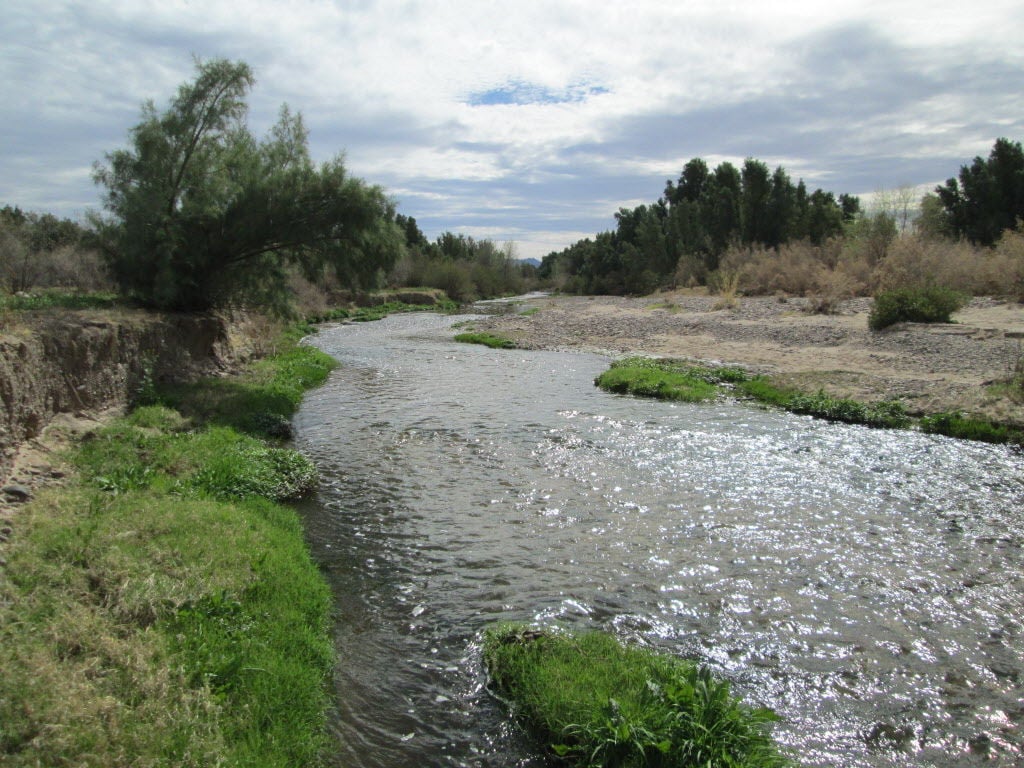State law says recharging effluent is worth twice as much money if you put it in a pit or basin outside a river than if you leave it in a river.
But the technical basis for that law seems shaky. While it’s clear that effluent can be more effectively recharged outside a riverbed, there are no known studies saying it’s twice as effective in general, state water officials say. (Recharge is intended to replenish the underground water table.)
The law, passed in the 1990s, allows effluent users to receive legal credits for 100 percent of what they recharge in a constructed facility such as a basin, and 50 percent when recharged in a river.
That law is now prompting the U.S. Bureau of Reclamation to propose diverting up to 7,000 acre-feet a year of effluent from the Lower Santa Cruz River, where it nourishes riparian vegetation, and recharging it elsewhere, to raise more money. Without the effluent, the river would dry up.
But the 50 percent credit for recharging effluent into rivers is a number that was “pulled out of the air,” recalls Kathleen Ferris, a longtime Arizona water official and attorney, and a former Arizona Department of Water Resources director.
When the state law passed, the theory behind the credit allocation scheme for effluent was that, “You are supposed to actually do something different from what Mother Nature was already doing if you are going to get a credit,” remembers Kathy Jacobs, who was then director of the state water agency’s Tucson office.
“Then, you are doing something to recharge it, rather than just letting gravity do the work,” said Jacobs, who today is director of a University of Arizona climate adaptation research center.
Recharge basins can be managed to encourage a high recharge rate by scraping the bottom of basins, and by spending money on various kinds of infrastructure to keep water in a particular place, Jacobs said.
“I don’t know exactly what we did and didn’t know at the time, but enough artificial recharge facilities were built at that point that we knew that you can increase recharge rate by managing the facility,” Jacobs said.
This month, Arizona Department of Water Resources spokeswoman Michelle Moreno said her staff could find no report or study justifying the 50 percent figure. After many conversations with current and former department staffers, “it looks like the 50 percent was more of a compromise,” she said.
“I wish we could have come up with more info, but it looks like none exists,” Moreno said in an email.
Another theory behind the 100/50 percent credit system was that if you ran a constructed recharge facility such as a spreading basin, you could control how much water goes into the ground, Ferris said.
But, “nobody knew how much water you get underground, if you let it stay in the river. The 50 percent … I don’t think it’s backed by any science,” said Ferris, now chief legal counsel for the Phoenix-based Arizona Municipal Water Users Association.
Michael Campana, an Oregon State University hydrology professor, said he suspects that a properly designed, located, built and maintained artificial recharge project would function better than recharge in a stream channel, particularly one that carried a high sediment load during a flood.
But, “from ecohydrologic and aesthetic standpoints I cannot support the bureau’s project,” added Campana, who earned a master’s and a doctorate in hydrology at UA in the 1970s. “How much is that extra (recharge) worth, especially if it threatens riparian areas? How much are the riparian areas worth?”
The reason for establishing the 50 percent credit needs re-examining, said Sharon Megdal, director of UA’s Water Resources Research Center.
“The bureau owns 28,200 acre-feet of effluent. That would be, in my opinion, a very nice base flow to keep water in the river,” she said.





